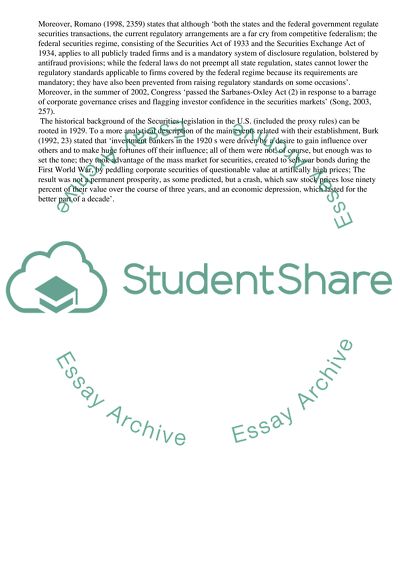Cite this document
(“Management and Control of Corporation Essay Example | Topics and Well Written Essays - 4750 words”, n.d.)
Management and Control of Corporation Essay Example | Topics and Well Written Essays - 4750 words. Retrieved from https://studentshare.org/management/1536377-managemnet-and-control-of-corporation-voting-by-proxy
Management and Control of Corporation Essay Example | Topics and Well Written Essays - 4750 words. Retrieved from https://studentshare.org/management/1536377-managemnet-and-control-of-corporation-voting-by-proxy
(Management and Control of Corporation Essay Example | Topics and Well Written Essays - 4750 Words)
Management and Control of Corporation Essay Example | Topics and Well Written Essays - 4750 Words. https://studentshare.org/management/1536377-managemnet-and-control-of-corporation-voting-by-proxy.
Management and Control of Corporation Essay Example | Topics and Well Written Essays - 4750 Words. https://studentshare.org/management/1536377-managemnet-and-control-of-corporation-voting-by-proxy.
“Management and Control of Corporation Essay Example | Topics and Well Written Essays - 4750 Words”, n.d. https://studentshare.org/management/1536377-managemnet-and-control-of-corporation-voting-by-proxy.


